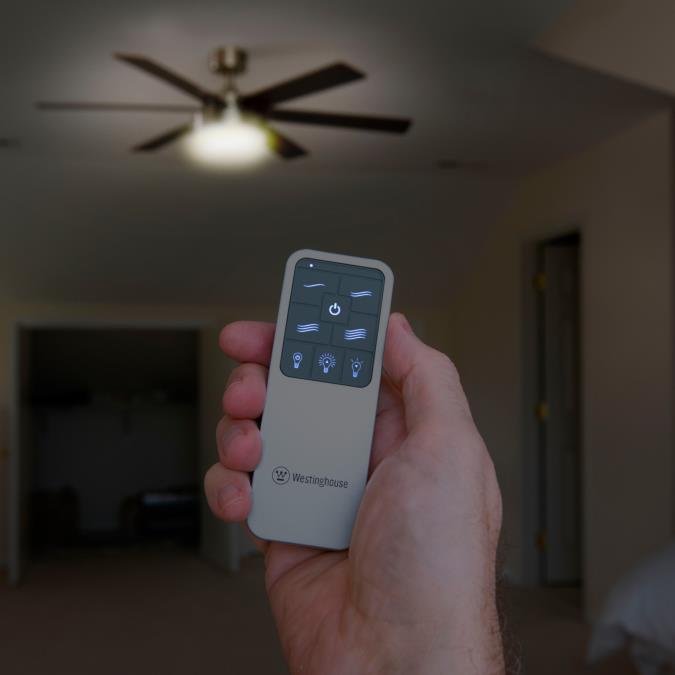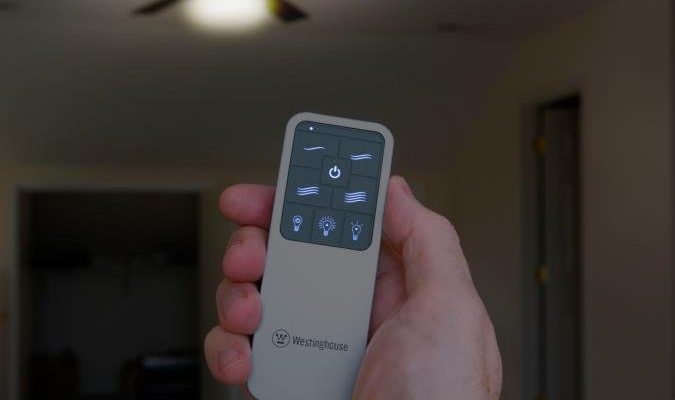
Here’s the thing: ceiling fan remotes used to be simple. You’d press a button, and the fan obeyed. But now, with smart homes getting smarter, people are wondering if their trusty Westinghouse remote can jump on the Wi-Fi bandwagon. Can it integrate with Alexa or Google Assistant? Or is it stuck in the old-school, battery-powered world? Let’s break down what these remotes can (and can’t) do, one step at a time.
Understanding Westinghouse Ceiling Fan Remotes: Old Tricks, New Demands
Before we talk smart home magic, let’s start with what a typical Westinghouse ceiling fan remote actually does. Most of these remotes look like your average TV zapper, but instead of channel surfing, you’re toggling between fan speeds and flipping the light on and off. Some models include extras—timers, dimming, maybe even a reverse function for winter airflow—but at their core, they’re built for direct, no-nonsense control over a single fan.
These remotes use basic radio frequency (RF) signals. Think of RF as sending invisible Morse code from your remote to a receiver tucked inside your fan. No Wi-Fi. No Bluetooth. No network handshakes or password screens. It’s as simple as pushing a button and watching something happen above your head. For a lot of folks, that suits their needs just fine—until the day they want to tell their fan what to do using only their voice or a smartphone.
You might be wondering: does “old-fashioned” mean obsolete? Not at all. These basic remotes are reliable, easy to pair and reset, and don’t depend on an internet connection staying up. But, honestly, if you dream of a home where every gadget talks to every other gadget, you might run into some walls with these classic Westinghouse setups.
What Does “Smart Home Integration” Mean for Ceiling Fan Remotes?
Smart home integration is one of those phrases that sounds slick, but let’s pin down exactly what it means here. At its heart, smart home integration lets your remote (and fan) connect with larger systems—like Amazon Alexa, Google Home, or Apple HomeKit. This opens the door for voice commands, phone app controls, scheduled routines, and syncing with other devices (think: turning off all lights and fans with a single phrase).
For a ceiling fan remote, integrating into a smart home system usually means one of the following:
- Connecting directly to your home Wi-Fi or via Bluetooth so it can talk to apps or voice assistants.
- Working with a hub—like Samsung SmartThings or Wink—that bridges traditional devices to modern networks.
- Being designed with “smart” features built-in from the start, like a dedicated app, automation, or programmable settings.
Here’s the catch: most traditional Westinghouse fan remotes weren’t built with any of this in mind. They’re strictly RF, with no “smarts” under the hood. You can code, pair, or reset the remote all day long, but you won’t unlock voice control or smartphone access without some extra hardware.
Do Westinghouse Ceiling Fan Remotes Offer Built-in Smart Home Support?
Let me explain the tough truth—most out-of-the-box Westinghouse ceiling fan remotes do *not* offer built-in smart home compatibility. That means you can’t simply pair your remote with Alexa or Google Assistant from the start. No matter how often you press the sync button, that RF receiver isn’t going to show up on your Wi-Fi network.
Why is this? The main reason is cost and simplicity. Westinghouse fans are built to be accessible, reliable, and easy to install. Adding smart features—like Wi-Fi chips, cloud services, and app development—raises the price and complexity. So for now, most Westinghouse fans ship with a classic remote setup.
If you’re determined to stay within the Westinghouse ecosystem, some newer models might toss in a few smart options, but they’re the exception, not the rule. Always check the product specs closely. If it doesn’t mention Wi-Fi, apps, or smart integration clearly, don’t expect those features to be hiding in the fine print.
Workarounds: Upgrading Westinghouse Fans for Smart Home Integration
Let’s get creative. If you’ve already got a Westinghouse ceiling fan, you’re not totally stuck in the analog age. There are a few workarounds to add smart home features without replacing your entire fan.
Option 1: Smart Fan Controllers
- Devices like Bond Bridge or certain universal smart fan remotes can “learn” your fan’s RF signals.
- Once set up, they act as translators between your existing remote and your Wi-Fi network, letting you use smartphone apps or voice controls.
- This usually means pairing your original remote with the smart controller, syncing the codes, and connecting to your network.
Option 2: Smart Wall Switches
- If your fan uses a wall switch, swapping it out for a smart switch lets you control fan power and lights from your phone or smart speaker.
- This route doesn’t offer speed or advanced controls unless you invest in a more specialized (and pricier) switch.
Option 3: Universal Smart Fan Kits
- Some companies sell retrofitting kits that replace your fan’s internal receiver with a new one that supports Wi-Fi or Bluetooth.
- This is a bit more DIY, but it essentially gives any ceiling fan—including Westinghouse models—a smart brain.
Just know: these solutions require a bit of tinkering, and you’ll need to set aside time for programming, pairing, and troubleshooting. Still, it’s way cheaper than buying a brand-new smart fan.
How to Pair, Reset, and Troubleshoot Westinghouse Ceiling Fan Remotes
Anyone who owns a ceiling fan remote knows that things can go sideways—maybe the fan stops listening, or suddenly the light refuses to cooperate. If you’re sticking with traditional Westinghouse remotes, it’s important to know the basics of pairing, resetting, and troubleshooting.
Pairing usually means syncing your remote with the fan’s receiver. This is often done by pressing a combination of buttons (sometimes with the power off, then on, and holding “learn” or “sync” on the remote). The fan and remote agree on which “codes” they’ll use so there’s no confusion.
Resetting a remote typically involves either removing the batteries or flipping a switch on the fan’s receiver. After a reset, you’ll repeat the pairing process. This is helpful if your remote stops working after a battery change or a power outage.
Troubleshooting tips include:
- Checking the batteries—old or weak batteries are the
- Making sure the dip switches (tiny switches inside battery compartments) are set to match between the remote and the fan receiver.
- Verifying there are no interference sources (like other RF devices) nearby.
- Testing the remote with another fan, if possible, to isolate issues.
If you’re seeing strange behavior or nothing happens when you press buttons, start with the easiest fixes—swap batteries and double-check your sync steps before assuming the remote or receiver is broken.
Westinghouse vs Universal and Smart Remotes: A Comparison
You might be stuck on the fence: stick with the remote that came with your Westinghouse fan, or swap it for something more high-tech? Here’s how they stack up:
| Remote Type | Features | Smart Home Integration | Ease of Use |
| Westinghouse Original | Basic functions, reliable, easy pairing | No built-in support | Very simple |
| Universal RF Remote | May work with multiple brands, slightly more flexible | No built-in support | Simple but may require code setup |
| Smart Fan Remote (e.g., Bond Bridge, retrofit kits) | App control, voice commands, routines | Full integration with Alexa, Google, etc. | Setup is more complex, but powerful |
If you want plug-and-play simplicity, stick with what Westinghouse provides. If you’re craving smart features and you don’t mind a little extra setup, a third-party smart remote or hub is worth considering.
Batteries, Range, and Reliability: What to Expect from Westinghouse Remotes
Even the best technology is only as good as its power supply. Westinghouse ceiling fan remotes are battery-operated, usually running on AAAs or a 9V. Low batteries are the number one reason remotes stop working or seem flaky—sometimes the range drops, or you have to press buttons multiple times.
RF remotes generally have a decent range: expect 20–40 feet in most homes, though thick walls or interference from other electronics can shrink this. Unlike Wi-Fi or Bluetooth gadgets, you don’t have to worry about router reboots or password changes.
Reliability is actually a strong point for these old-school remotes. There’s no cloud service that might go down and no software updates to break things. As long as your batteries are fresh and your remote is paired correctly, the system mostly just works—until you wish you could say, “Hey Google, turn on my fan.”
When to Consider Upgrading to a True Smart Ceiling Fan
If you’re ready to leap into full-blown smart home integration, at some point, a piecemeal approach with add-ons and hacks might feel clunky. Upgrading to a true smart ceiling fan isn’t just about showing off to your friends (“Watch this, Alexa!”), but about smoother routines and easier living.
Smart fans come with built-in Wi-Fi, apps, and deep integration with home ecosystems. They’re a bigger upfront investment but can save you the hassle of troubleshooting, pairing, and dealing with third-party devices. Westinghouse offers a few smart models, but you’ll find the most options from brands like Hunter, Casablanca, or Modern Forms.
If your current fan is working perfectly, don’t feel pressure to upgrade right away. But, if you’re updating your home and want everything to play nice together—from lights to thermostats to ceiling fans—it might be time to go fully smart.
Final Thoughts: Matching a Westinghouse Ceiling Fan Remote to Your Smart Home Goals
Westinghouse ceiling fan remotes are like reliable old cars—easy to use, not flashy, and they almost never let you down. But if your dream home has voice commands for every gadget, these remotes will leave you wanting more. While there’s no direct smart home support built into classic Westinghouse fan remotes, clever workarounds and smart add-ons can bridge the gap, giving you the best of both worlds if you’re willing to put in the effort.
Honestly, it comes down to what matters most: If you value simple, rock-solid performance, the included Westinghouse remote gets the job done. If you crave seamless smart integration, you’ll need extra tech—either in the form of a universal smart controller or a whole new smart ceiling fan. Either way, it’s your home and your choice. Now you know what’s possible, and you can build the setup that works for you, one button—or one voice command—at a time.
